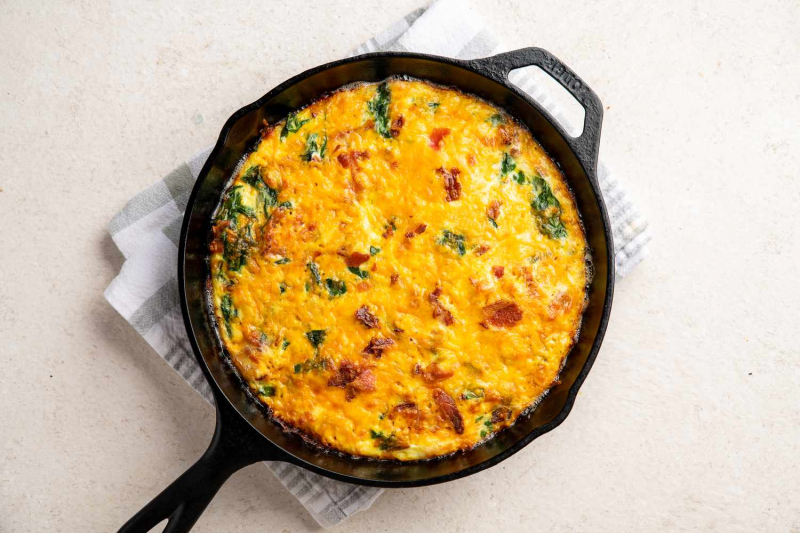A Note From the Editors
The Spruce Eats does not endorse this diet; rather, we are providing some information that can contribute to your decision. Please talk with your doctor or a registered dietitian before making any significant changes to your diet.
Low Carb Diet Basics
Most people use low-carb diets as a way to lose weight, and research shows that a moderately low-carbohydrate diet can be heart-healthy when low in saturated fat. Carbohydrates, or carbs, are the sugars, starches, and fiber contained in grains, fruits, vegetables, and dairy products. With the exception of fiber, carbohydrates are the body's preferred energy source.
An extremely low carb eating plan causes the body to go into a metabolic state known as ketosis, which happens when the body burns stored fat for energy and may result in weight loss.
There are a number of diets based on the principle of reducing carbs, including the Atkins diet, Dukan diet, keto diet, paleo diet, Whole30 diet, and the South Beach diet. These diets differ in the particulars of how many carbs may be consumed, and what specific foods are in or out, but all of them are based on significantly lowering the amount of carbohydrates consumed.
A low-carbohydrate diet is commonly defined as consuming no more than 20 g of carbohydrate per day, while a moderate-carbohydrate diet is thought to provide between 40% and 55% of calories from carb, which amounts to at least 200 grams daily on a 2,000-calorie diet.(see #2 reference, below)
Foods that are limited or avoided include bread, pasta, whole and refined grains, potatoes and other starchy vegetables, sugar, sweets (including cookies, ice cream, candy, and soda), milk, and high-carb fruits like apples, grapes, and bananas.
Pros and Cons
Pros
- May promote short-term weight loss, but not more effective than other types of diets.
- May lead to better overall health when combined with a healthy low-fat diet.
- It may also be beneficial to heart health, and reduce insulin resistance and visceral fat, though it has some side effects, may lead to vitamin deficiency, and can be relatively expensive.
- Diet can fit well with the average person's lifestyle, family dinners, eating out.
- Low-carb recipes are plentiful.
Cons
- May be detrimental to overall health, especially over the long term.
- Sugar and refined grains are relatively inexpensive foods, so the diet may be inaccessible for people with limited financial resources.
- May lead to deficiencies in vitamins C, D, E, and B7, as well as for magnesium, iron, folic acid, calcium, and fiber.
- May produce temporary side effects such as constipation, headaches, and muscle cramps.
- Lower energy levels, especially when exercising.
- Giving up bread, pasta, potatoes, sweets, dessert, soda, and beer can be difficult for some.
- You will need to educate yourself about the carbohydrate content in everything that you eat, which takes time.
What to Eat on a Low Carb Diet
On a low-carb diet, foods that are low in carbohydrates are the central focus. While it is not possible (or desirable) to eliminate carbs altogether, the goal of a low-carb diet is to consume no more than 20 grams of carbohydrate per day on a 2,000-calorie diet. One simple guideline for vegetables is that vegetables grown above ground (as opposed to root vegetables) tend to be lower in carbs. Typical foods to eat include:
Low Carb Foods
- Nonstarchy vegetables (such as zucchini, broccoli, cauliflower, cabbage, spinach, and lettuce)
- Meat (including beef, poultry, pork, and lamb)
- Fish and seafood
- Eggs
- Dairy (including cheese, butter, cream, and yogurt)
- Lower-carb fruits (berries, cherries, plums, kiwi, and melon)
- Nuts and seeds (including nut butters)
- Added fat, such as olive, canola, and soybean oils
Here is a one-day sample meal plan, as well as a number of recipes you could enjoy while on a low-carb diet.
- Breakfast: Keto Pancakes
- Lunch: Thai Basil Chicken Lettuce Wraps
- Snack: Kohlrabi Chips
- Dinner: Instant-Pot Coq au Vin
Breakfasts:
- Chaffle
- Instant-Pot Egg Bites
- Mexican-Style Omelet
- Sunny-Side Up Eggs
Lunches/Dinners:
- Nicoise Salad Recipe
- Shrimp with Creamy Garlic Sauce
- Chicken Cauliflower Casserole
- Steak and Cheese Stuffed Peppers
- Pork Chops with Roasted Broccoli and Fennel
Snacks:
- Avocado Chips
- Queso Dip with Cream Cheese
- Keto Corn Bread
Desserts
- Sugar-Free Chocolate Mousse
- Pumpkin Cream Cheese Muffins
- Keto Sugar Cookies
What Not to Eat on a Low Carb Diet
On a low carb diet, foods to avoid would include bread, pasta, potatoes, and other starchy vegetables, grains such as rice and corn, oatmeal, beans and lentils, milk, sugar, sweets such as cookies, candy and ice cream, beer, soda, and higher carb fruits like bananas, grapes, and apples.
Bottom Line
Most people use low-carb diets as a way to lose weight, and research shows that a moderately low-carbohydrate diet can be heart-healthy when low in saturated fat. It may also be beneficial to heart health, and reduce insulin resistance and visceral fat, though it has some side effects, may lead to vitamin deficiency, and can be relatively expensive. Eliminating foods like bread, pasta and sweets may be difficult for some, though it's possible for most people to eat a lower-carbohydrate diet that fits into their lifestyle.

